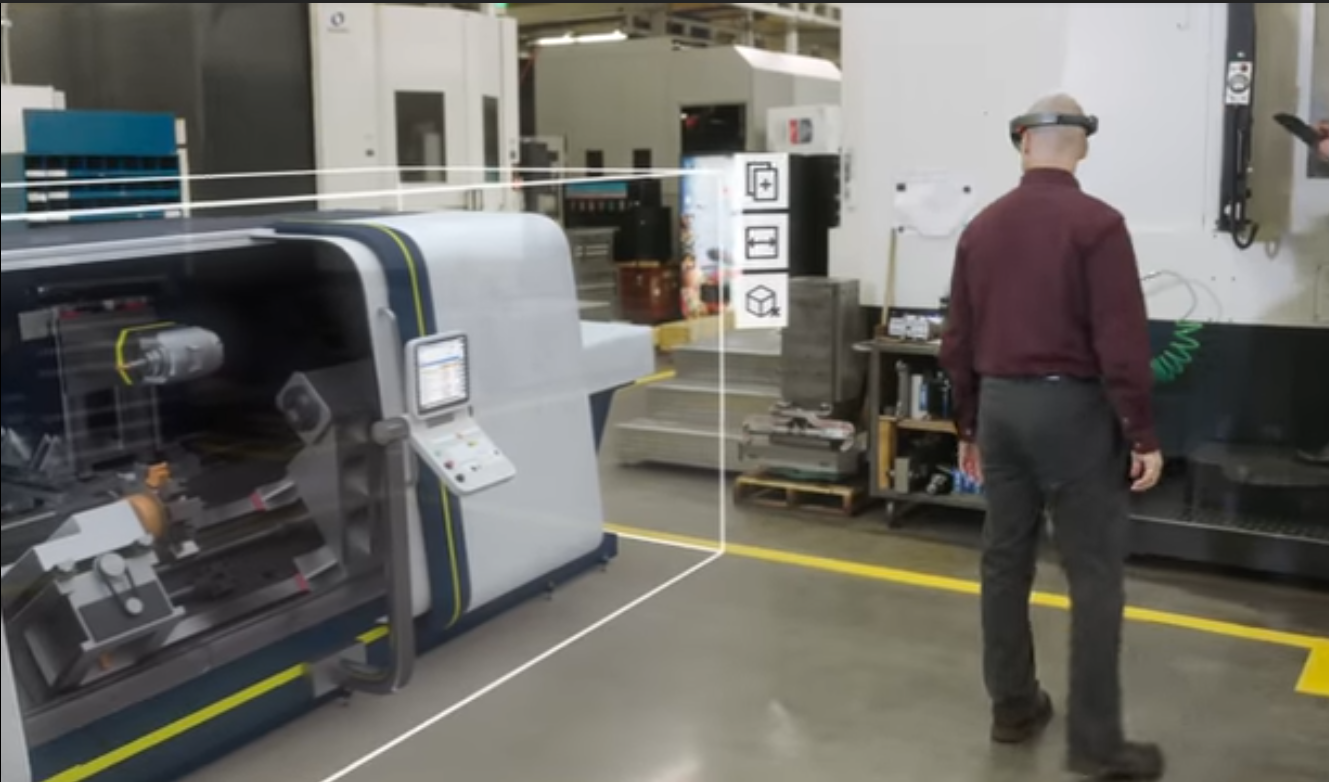 EMERGING TECH
EMERGING TECH
 EMERGING TECH
EMERGING TECH
 EMERGING TECH
EMERGING TECH
Microsoft Corp. announced two applications today for its augmented reality device HoloLens that will connect the workplace with AR.
The two new apps were revealed at Build 2018, the Microsoft’s annual developer conference showing off upcoming products. Microsoft Remote Assist will connect the point of view of workers in the field with remote help by layering reality and Microsoft Layout will let office and industrial workers to design floor plans with 3-D layouts.
Technicians in the field often find themselves needing to apply their knowledge on the fly and often collaborate with experts on the phone or over devices when reference materials cannot cover what’s needed. With Microsoft Remote Assist, a distant expert (or experts) can see exactly what the technician is seeing via a video call and can even annotate and augment the reality that the technician sees on the fly.
Remote Assist connects with Microsoft’s collaboration tool Teams to allow image sharing and AR annotation. Using freehand drawing, both the technician in the field and the remote expert can “draw” over the technician’s vision with colored lines and arrows.
It’s also possible to display images, such as 3-D renderings of equipment or components alongside reference sheets to help facilitate technical communication.
This development for HoloLens follows two years of customer feedback to Microsoft about the usefulness of AR for collaboration. As far back as 2016, Microsoft explored AR collaborative meeting apps, including one with Object Theory LLC revealed at Build 2016.
In the industry at large, Atheer Inc. has built its own ruggedized industrial AR glasses for this purpose and Scope AR released similar industrial remote assist software. In the workplace, AR is such a hot item that industrial AR outfit Upskill raised $17.2 million in funding in March to build out solutions.
The other AR app revealed at Build was Microsoft Layout: an industrial-scale floorplan design application that would allow a project manager on the actual work floor to see equipment and furniture as it would look once placed.
The video from Microsoft shows the manager of an industrial space, a factory floor, looking at an open area of concrete floor between large machinery. The HoloLens app allows the manager to choose an additional piece of equipment as a hologram and place it on the floor in the size it would be once installed.
With this, the software can provide a sense of context and space that might be lost on a top-down layout drawn in 2-D on a piece of paper or even in 3-D on a computer screen. It also allows the manager to “see” how the equipment will set in relation to other parts of the floor, giving a better idea of where people would walk and how materials and mobile equipment would move around it.
The software would also allow the user to measure the distance between objects in the visual field, allowing for exact placement or providing an in-context measurement to know exactly how far apart the currently present and new equipment would sit. There’s no need to “eyeball” something when it’s possible to deploy a virtual measuring tape.
Although the software could be used to design the layout of an office space as well. A potential open-cubicle space could be grown into the vision of a designer out of an empty room. This would give an office manager an idea of how space could be used to put desks or cubicles and how the layout would actually look in relation to entrances, exits, windows and other walled offices.
Microsoft Layout would integrate with 3-D layout software allowing it to both display AR furniture and equipment imported from layout software as overlays on reality and export back into design software from the factory floor.
Using AR to allow customers to understand how furniture would affect their spaces is a common use case explored in the industry. Amazon.com Inc. released its own AR app in November for iOS devices to assist new buyers so they could place the item in their own house before a purchase. Also, for consumers with smartphones and tablets, Houzz Inc. released an AR app for furniture and do-it-yourself home design app Decor Matters allows the viewing of 3-D furniture in a home.
So far, most applications of this type have approached consumers and use consumer devices, such as smartphones and tablets, because AR glasses such as HoloLens are not yet commonplace on the street or in the office. Microsoft has released a HoloLens developer edition, for the expensive price tag of $3,000, but the device itself has not yet hit the general market. However, adding apps such as these to the ecosystem add to its total value from the factory floor to the business office.
Microsoft Remote Assist and Layout will be available for a limited time starting on May 22. There is a list of technical requirements available at Microsoft’s HoloLens portal, including where to download the app when it becomes available.
Support our mission to keep content open and free by engaging with theCUBE community. Join theCUBE’s Alumni Trust Network, where technology leaders connect, share intelligence and create opportunities.
Founded by tech visionaries John Furrier and Dave Vellante, SiliconANGLE Media has built a dynamic ecosystem of industry-leading digital media brands that reach 15+ million elite tech professionals. Our new proprietary theCUBE AI Video Cloud is breaking ground in audience interaction, leveraging theCUBEai.com neural network to help technology companies make data-driven decisions and stay at the forefront of industry conversations.